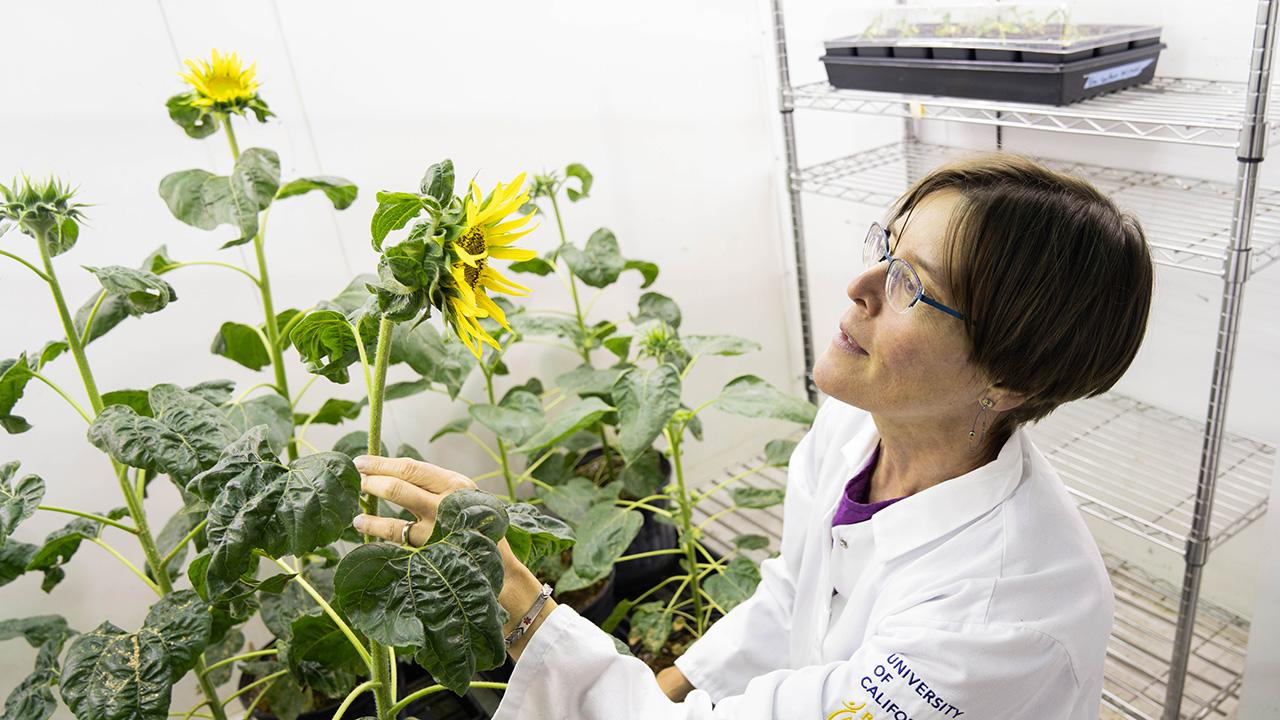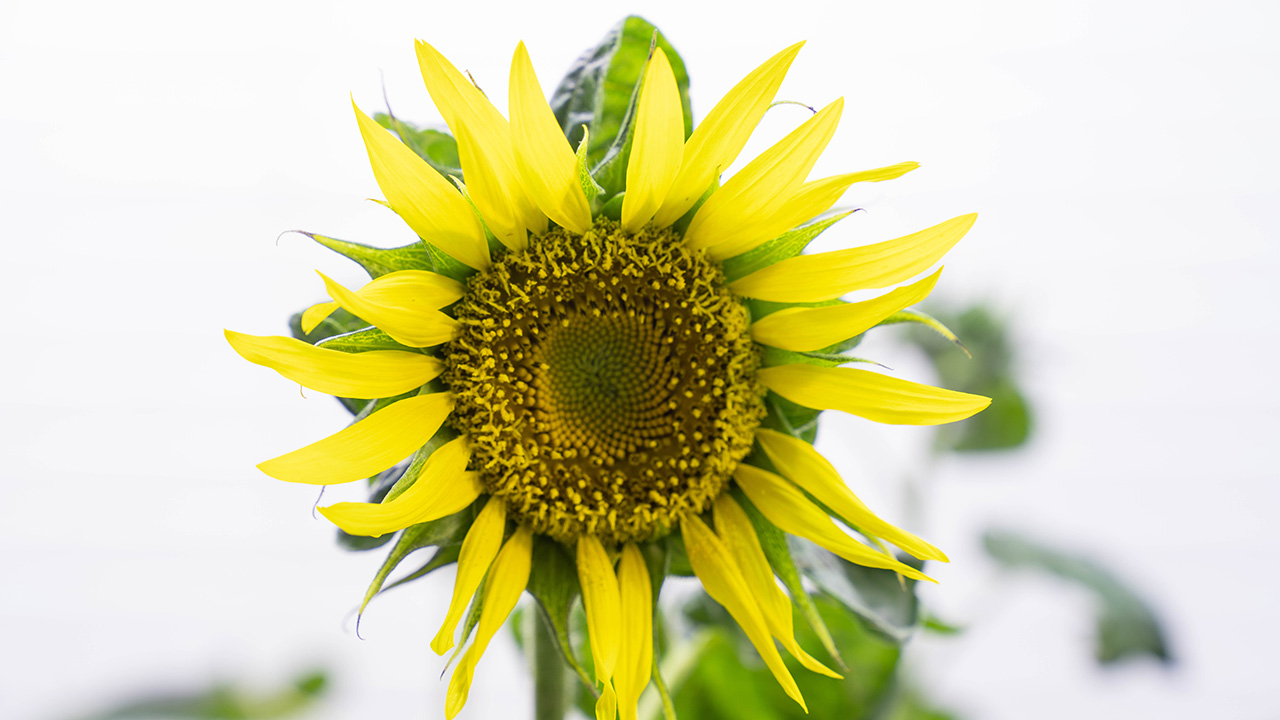
How Sunflowers See the Sun
Sunflowers famously turn their faces to follow the sun as it crosses the sky. But how do sunflowers “see” the sun to follow it? New work from plant biologists at the University of California, Davis, published Oct. 31 in PLOS Biology, shows that they use a different, novel mechanism from that previously thought.
“This was a total surprise for us,” said Stacey Harmer, professor of plant biology at UC Davis and senior author on the paper.
Most plants show phototropism – the ability to grow toward a light source. Plant scientists had assumed that sunflowers’ heliotropism, the ability to follow the sun, would be based on the same basic mechanism, which is governed by molecule called phototropin and responds to light at the blue end of the spectrum.
Sunflowers swing their heads by growing a little more on the east side of the stem – pushing the head west – during the day and a little more on the west side at night, so the head swings back toward the east. Harmer’s lab at the UC Davis College of Biological Sciences has previously shown how sunflowers use their internal circadian clock to anticipate the sunrise, and to coordinate the opening of florets with the appearance of pollinating insects in the morning.
In the new study, graduate student Christopher Brooks, postdoctoral researcher Hagatop Atamian and Harmer looked at which genes were switched on (transcribed) in sunflowers grown indoors in laboratory growth chambers, and in sunflowers growing in sunlight outdoors.
Indoors, sunflowers grew straight toward the light, activating genes associated with phototropin. But the plants grown outdoors, swinging their heads with the sun, showed a completely different pattern of gene expression. There was no apparent difference in phototropin between one side of the stem and another.

The researchers have not yet identified the genes involved in heliotropism.
“We seem to have ruled out the phototropin pathway, but we did not find a clear smoking gun,” Harmer said.
Blocking blue, ultraviolet, red or far-red light with shade boxes had no effect on the heliotropism response. This shows that there are likely multiple pathways, responding to different wavelengths of light, to achieve the same goal. Upcoming work will look at protein regulation in the plants.
Sunflowers are quick learners. When plants grown in the lab were moved outdoors, they started tracking the sun on the first day, Harmer said. That behavior was accompanied by a burst of gene expression on the shaded side of the plant that did not recur on subsequent days. That suggests some kind of “rewiring” is going on, she said.
Apart from revealing previously unknown pathways for light-sensing and growth in plants, the discovery has broad relevance, Harmer said.
“Things that you define in a controlled environment like a growth chamber may not work out in the real world,” she said.
Atamian is now an assistant professor at Chapman University.
